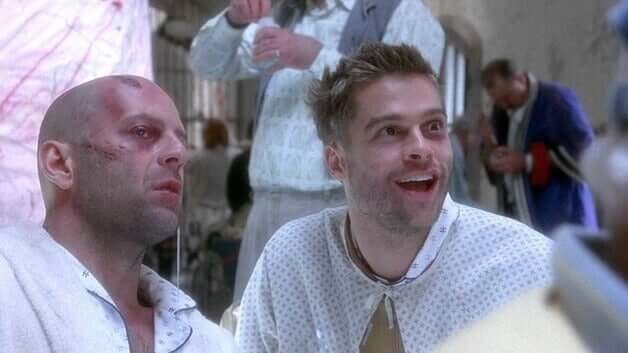Reality always ends up surpassing fiction. We would never have thought that this phrase would make as much sense as today, and certainly if a few months ago we had been told that in the 21st century we would be living in such a critical health situation, we would not have believed it. Today we keep a film that warned of an inhospit future in the wake of a virus: The Twelve Monkeys (Gilliam, 1995).
Fiction has become so old-fashioned that dystopia no longer surprises us; not even Charlie Brooker, the creator of Black Mirror, wants to continue his series, yet, despite the circumstances, it never goes without seeing those films that seemed to predict what was going to happen.
- We have already commented on other occasions that dystopia.
- As a branch of science fiction.
- Seems to alert us to a dark and inhospitable future.
- Futures that.
- Instead.
- Can be a direct consequence of our present if we do not take the necessary measures to avoid it.
Thus, dystopia became a particularly prolific genre in the 21st century and the end of the 20th century, as many seem to have predicted the negative consequences of unprecedented technological advancement.
Today, among all these dystopias, The Twelve Monkeys seems much more real than expected. This future in which humanity has been condemned to live underground because of a virus makes more sense today than ever before.
Filmmaker Terry Gilliam, who had already tasted the honey of success with the monty Python group, was inspired by the French film La Jetée (Marker, 1962) to create the famous The Twelve Monkeys.
Bruce Willis shines in the lead role, playing a man who, born in the late 1980s, sees the world he knew disappear due to a virus. Condemned to live underground with the rest of humans, he is sent on a series of missions that aim to correct the mistakes of the past, i. e. understand the origin of the virus and obtain samples that allow scientists to develop a vaccine.
As an antagonist, we meet a young Brad Pitt, who already wanted to disassociate himself from “Beautiful?” And it gives us a great interpretation of insanity. The underworld inhabited by James Cole (Bruce Willis) appears before our eyes as dirty dark, inhospitable and dark.
The staging is as special as the filmmaker who signed the film. Time travel frames a film that has never gained more relevance than it does today.
Science fiction not only has machines and space travel, but also trips to the past (or the present) from an agonizing and dark point of view. The future can be daunting if we do not act properly in the present.
Far from getting carried away with the special effects, Gilliam opts for a suspense approach, in which the protagonist must unravel all the actions that led to what happened to get a cure or stop the progression of the problem.
Like all dystopia, it leaves us with a very ambiguous, if easily understandable, ending in which the inevitable seems stronger than scientific and technological progress.
There’s nothing I like more about The Twelve Monkeys than your vision of the human species through the walls of an asylum. Brad Pitt’s character, Jeffrey Goines, takes on special importance in these sequences. One way or another, subjecting the sent hero of the future, James Cole, to a situation like the asylum leaves our species in the spotlight.
Similarly, asylum is chaos before our eyes; a place that seems to exclude all those who move away from the established and who, far from reintegrating them, ends up separating them completely from society.
The viewer knows perfectly well that James Cole is sane, but the world does not seem to see him in the same way and, as a result, is subject to an environment almost more inhospited and chaotic than the apocalypse itself.
Exclusion from? Crazy? He refers to Foucault and his History of Madness in classical times, a work in which he observes himself as the “madman”. Changed over time and how he was equally condemned to exclusion.
Finally, despite Cole’s time travel and multiple attempts to change the past, it seems that the message of the Twelve Monkeys is clear: there is no solution, not even to try to change the past, because history repeats itself like a cycle.
Humanity, in a way, was doomed to suffer the consequences of the virus, so the only solution was to look for a vaccine or drug that could alleviate the disease.
In this sense, the female role in the film is interesting, especially from the current point of view. Dystopia appears to be a gender that has severely punished women, as seen in Vendetta’s The Tale of the Maid or V. excluded, appears to be in a position of greater vulnerability to dystopia.
What’s going on in The Twelve Monkeys? The only relevant female figure is dr. Railly, a psychiatrist who will assist Cole in his investigation. What catches the eye, as we have said these days, is the fact that the character is built around a man, a man who kidnaps her and with whom she ends up developing a love story. But it was the ’90s, and we’re not going to question this plot at a time when these kinds of stories were “fashionable. “
Leaving behind this question, we are faced with a film that is in despair, that seems to leave us with a bittersweet taste and that ends up telling us that. . . Thus, humanity seems faced with disaster, the inevitability of this invisible enemy that has kept us imprisoned or, as in the film, hidden.

